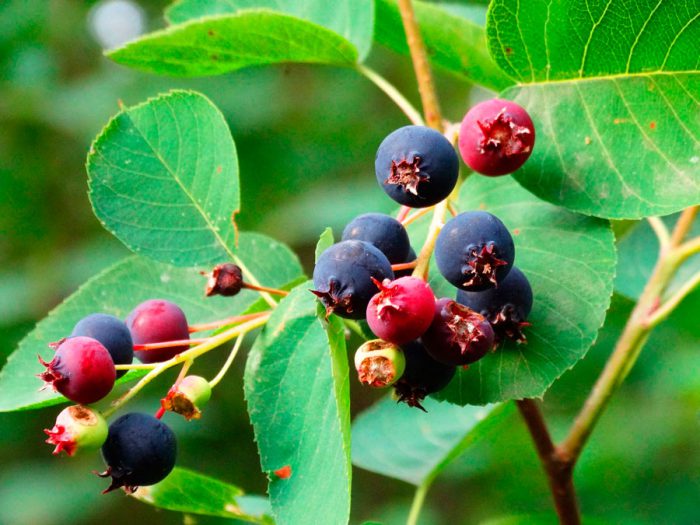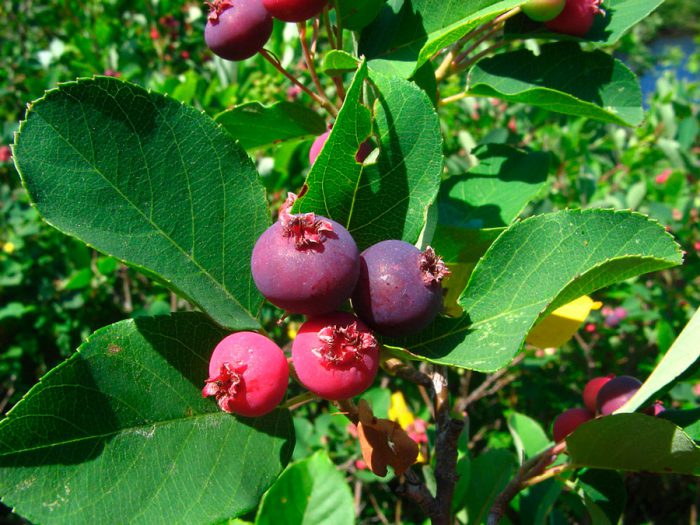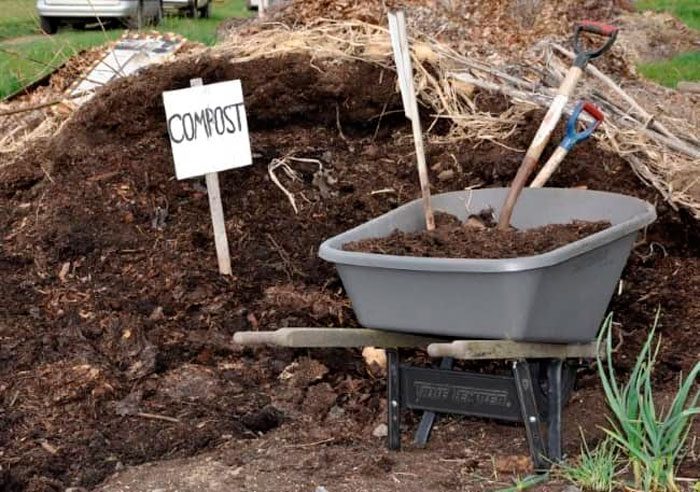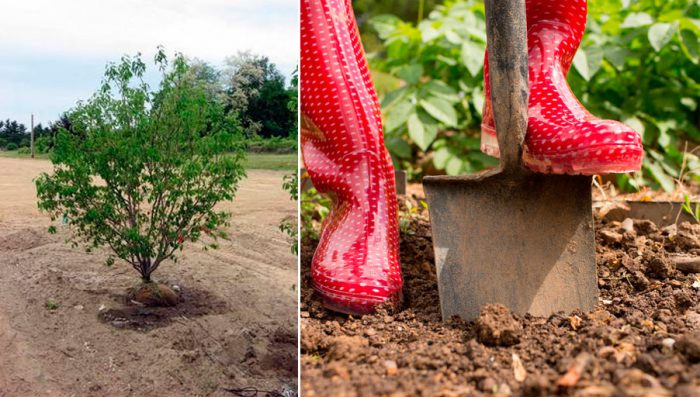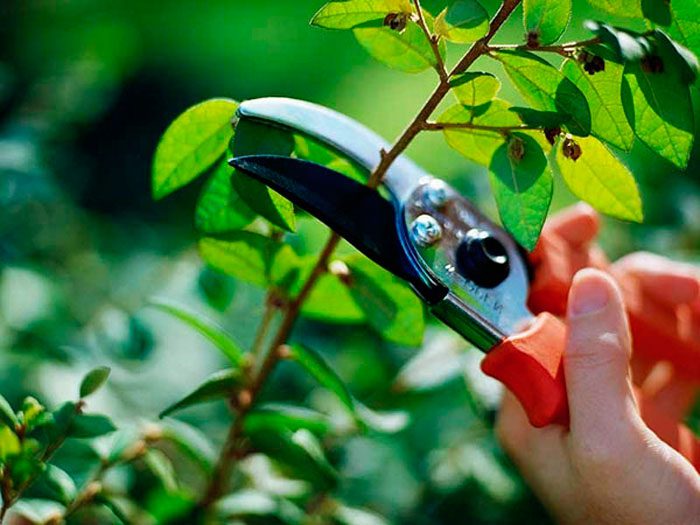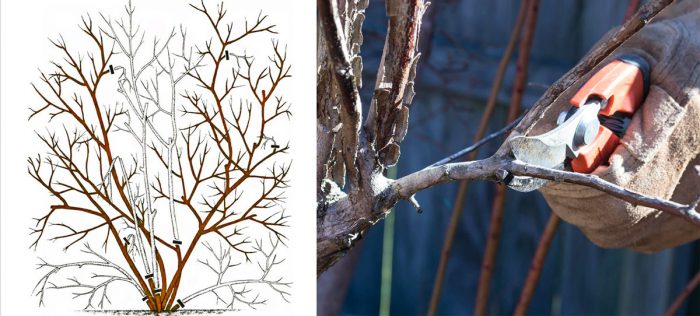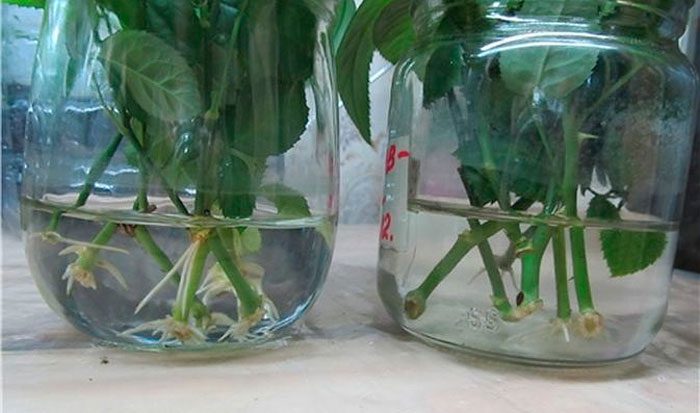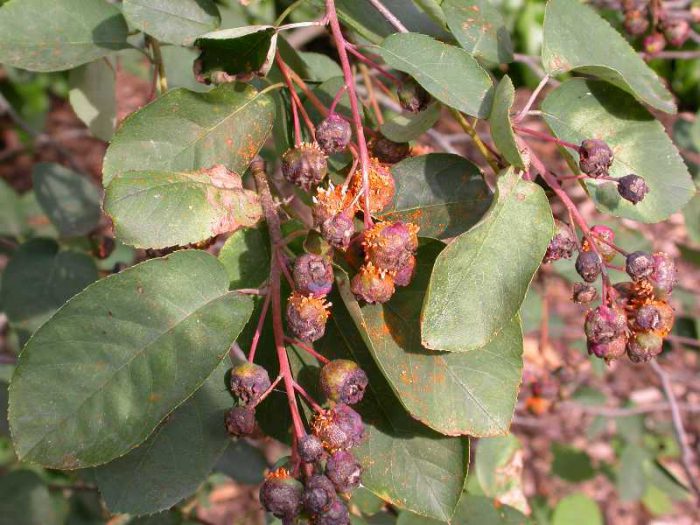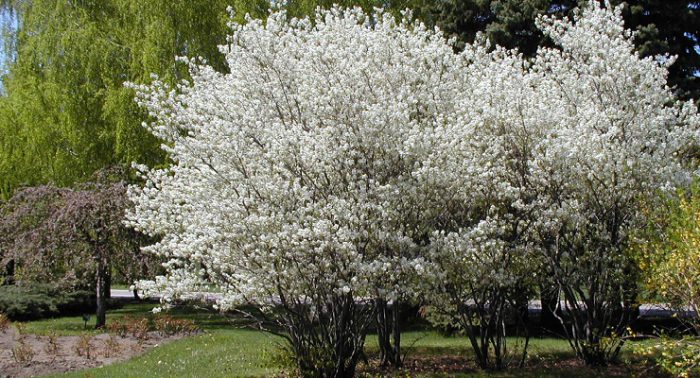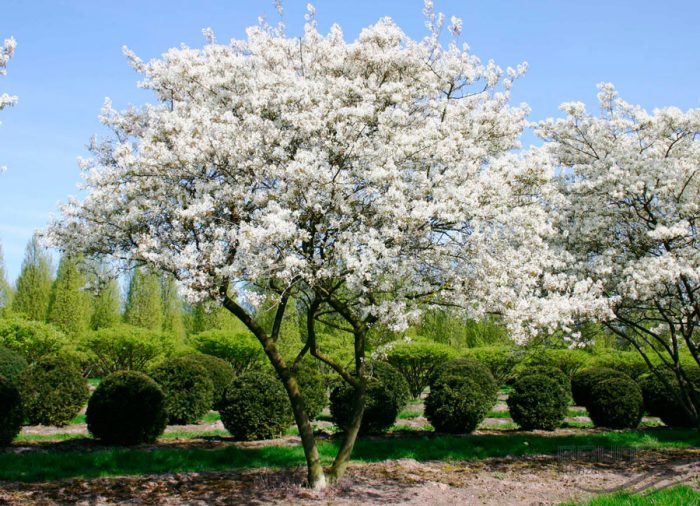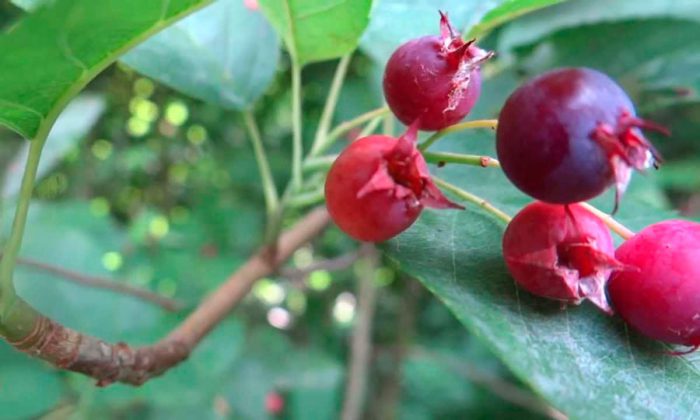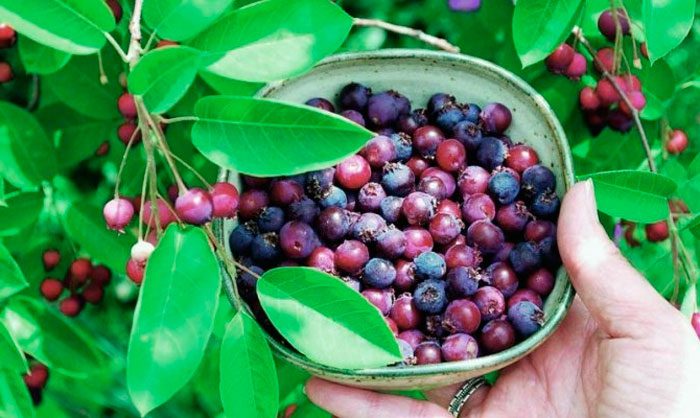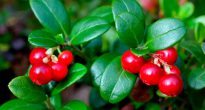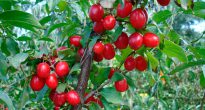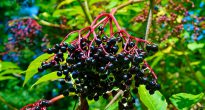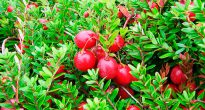Irga, also called Amelanchier, is a representative of the genus of the apple tribe of the rose family. Irga is a deciduous shrub or not a very large tree. The Latin name of such a plant has a Celtic or Provencal origin, in translation it means "to bring honey". In England, such a plant is called a useful or June berry and a shade shrub, and in America it is called "saskatoon" - this name was given to it by the Indians who are the indigenous inhabitants of the country. According to information taken from various sources, in the Northern Hemisphere, you can meet 18-25 species of irgi, with most of them native to North America. In the wild, such a plant prefers to grow on rocks, forest edges and in the tundra zone. About 10 species of irgi are cultivated by gardeners. They are grown for delicious sweet fruits and as ornamental plants.
Content
Features of irgi
When leaf plates begin to open on the irge bush, it looks very beautiful. It seems that the plant is shrouded in pubescence, as if it is covered with white-silver frost. When the foliage opens, pink and white flowers begin to bloom, which seem to cling to the branches. The shrub, covered with graceful racemose inflorescences, looks magically beautiful. The pink-olive or green leaf plates of this plant are also very beautiful. After the irga fades, the foliage loses its pubescence, at this time a slender shrub with a rather lush crown appears before the gardener's eyes. The velvety bark on the trunk is brownish-gray with a pink tint. During fruiting, small "apples" are formed on the bush, which are collected in a brush. Initially, they have a white-cream color and a pinkish blush, the berries become darker over time until their color turns purple-red, dark purple or purple.Juicy berries are very tasty and sweet, and they are loved not only by children, but also by birds that carry seeds around. In autumn, the shrub looks incredibly impressive again. Its foliage is painted in a variety of colors, from scarlet-red and orange-pink to deep yellow, while against the background of the few remaining green foliage, violet-purple highlights can be distinguished. Such an ornamental shrub is fast growing, fast growing, frost and drought resistant. At the same time, it was noted that on the top shoots of the last year, flowering is most magnificent, and fruiting is abundant. Irga is used as a rootstock for pears and dwarf apple trees, as it is distinguished by its reliability and endurance. The life span of such a shrub is from 60 to 70 years, gradually its stems become real trunks, sometimes their height reaches 8 meters. This shrub is one of the best honey plants. However, this wonderful plant has one big drawback, namely, abundant root shoots, which will be fought against throughout the season. However, if we consider that such a plant is not only beautiful and gives tasty berries, but also has healing properties, then such a disadvantage as root shoots seems insignificant.
Planting irgi in open ground
What time to plant
You can plant irga in open soil in spring or autumn. Moreover, experts advise to carry out such a procedure in the fall. A suitable place for the irgi should be well lit, in this case, its stems will not stretch out, looking for enough light, and will bear fruit abundantly. The soil suitable for such a shrub should be loamy or sandy loam. In general, the irga is not distinguished by its capriciousness regarding the soil, however, if you want a smaller amount of root growth to grow, then the soil must be saturated with nutrients. In humus-saturated soil, the irga will bear fruit more abundantly. The acidity of the soil can be any. But the areas on which the groundwater is very high are not suitable for planting this shrub, because its root system can go 200-300 centimeters deep. If the irgi planting is planned for the fall, then the preparation of the site for planting should be done in the spring. To do this, you need to remove all the weeds from it, and then the site is kept under black steam until the autumn planting. Immediately before planting the seedling, it is dug into open soil and 40 grams of potash and phosphorus fertilizer are applied for each 1 square meter. You do not need to dig up the soil deeply (by 10-15 centimeters).
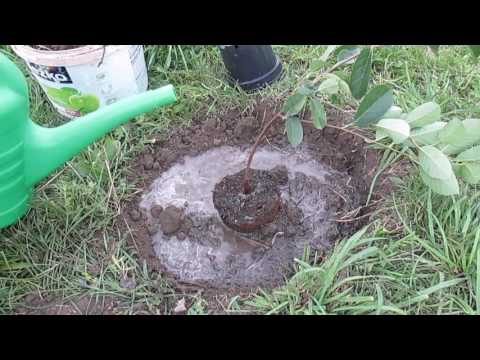

Watch this video on YouTube
How to plant an irgu
It is quite simple to plant an irga in open ground. For planting, you need to choose one-year or two-year seedlings. In the event that several seedlings are planted, then on the site they must be placed in a checkerboard pattern, while the distance between the bushes should be 100-150 centimeters. The size of the planting hole should be approximately equal to 0.6x0.6x0.5 m. The principle of planting the irgi is similar to that used for planting the following berry bushes: gooseberries, currants, raspberries, blackberries, blueberries, actinidia and honeysuckle. When digging a hole, the top fertile soil layer should be thrown back separately. It is combined with rotted compost and sand in a ratio of 3: 1: 1. Pour 1 or 2 buckets of humus, 0.4 kg of superphosphate and 150 g of potassium fertilizer into the finished planting pit. At the bottom of the pit, a mound must be made from the resulting substrate, on which the irgi seedling is installed. When the roots are spread out, the hole needs to be filled with a fertile top layer of soil that has been previously mixed with sand and compost. The soil needs to be compacted a little. Make sure that the root collar of the plant is not buried.Pour 8 to 10 liters of water under the planted seedling. After the liquid has been absorbed, the soil should settle. After that, such an amount of soil should be poured into the hole so that its surface is flush with the site. The surface of the trunk circle should be covered with a layer of mulch (humus, peat or dry soil). In a planted seedling, the ground part must be shortened to 15 centimeters, while 4 or 5 well-developed buds should remain on each stem.
Irga care
It is very easy to take care of the Irga. Once planted in the garden, it needs very little of your attention. It should be remembered that a well-groomed plant will not only be very beautiful, but also bring a rich harvest. Caring for such a shrub consists of infrequent watering, weeding, pruning and feeding. This plant is distinguished by its resistance to drought, because its long roots penetrate into the deep layers of the soil, where moisture is constantly present. In this regard, it is necessary to water irga only during a period of prolonged drought, while watering is recommended from a hose with a diffuser, in this case it will be possible at the same time to wash off all the dust from the surface of the foliage. Watering is recommended no earlier than 16:00, after the heat has subsided. After the plant has been watered, it is necessary to weed and simultaneously loosen the soil surface near the bush.
Top dressing irgi
When the plant is 4–5 years old, you need to start feeding it. Fertilizers are applied every year to the near-trunk circle for digging, while from the root collar it is necessary to retreat from 0.2 to 0.3 m.Thus, 1 or 2 buckets of humus, 0.3 kg of superphosphate and 0.2 kg of potassium should be added to the soil fertilizer that does not contain chlorine. From spring to the second half of the summer period, the bush needs to be fed with liquid organic matter, so, under each bush, ½ bucket of chicken manure solution (10%) is poured. The introduction of liquid fertilizers into the soil is carried out in the evening after the rain has passed or the plant is abundantly watered. Dry fertilizers should be distributed over the surface of the trunk circle, stepping back 0.3 m from the plant, then they are embedded in the ground, after which the area must be watered. As the shrub grows, the amount of fertilizer should be gradually increased.
Irgi transplant
Transplanting an adult irgi is very difficult. The fact is that the root system of the bush goes into the deep layers of the soil. In this regard, experts advise choosing the most suitable place for planting such a shrub so that it does not have to be transplanted. In the event that you cannot do without transplanting, then during the extraction of a middle-aged plant from the soil, it should be remembered that its root system in depth and width at this time grows by about 200 cm.If irge is 7 or 8 years old, then for that in order to transplant it painlessly, it is necessary that the diameter of the excavated root system be from 100 to 125 cm, and the depth is only 0.7 m. Those peripheral roots that remain in the ground, the shrub can grow relatively quickly in a new place. It should also be taken into account that the more mature the transplanted plant, the larger the diameter of the root system when digging it out of the soil. The plant extracted from the ground must be carefully transferred to a new place, while trying not to destroy the earthen lump. The shrub is placed in a pre-prepared hole, which is filled with soil. Then it is tamped well. The transplanted plant needs abundant watering. The surface of the trunk circle must be covered with a layer of mulch.
Irga in autumn
After the end of fruiting in the autumn, the irgi bush needs a thinning and sanitary pruning and feeding. Transplant if necessary. Dig the area, while you should rake and burn all the foliage that has flown.The bush does not need shelter for the winter, as even severe frosts (about minus 40 degrees) will not harm it.


Watch this video on YouTube
Pruning irgi
What time to trim
It may seem that the irga tolerates pruning very easily, but experts advise that this procedure be performed only when absolutely necessary. To reduce the number of trimmings, you need to know a few rules:
- To plant a bush, you must choose a well-lit place, because the sun's rays must penetrate into the very thick of the bush.
- Pruning can only be carried out on not very high varieties of irgi. If the plant is very tall, it will be very difficult to prune it, even if you use a stepladder.
- The first time it will be possible to cut the bush after 1 or 2 years after it is planted in the garden. This should be done in the spring before the period of sap flow begins.
How to trim irgu
In the early years, almost all zero shoots from the root growth should be cut out from the irgi, while leaving several of the most powerful ones. After the plant has the required number of stems, annual anti-aging pruning will be required, while the yield will be stable. To do this, once a year, it is necessary to cut out 2 of the oldest trunks, while leaving the same number of young trunks from the root growth. All vertical stems of young shrubs should be shortened by ¼ of last year's growth. In older bushes, it is necessary to trim the lateral branches, as a result of this, the crown will begin to grow in breadth, otherwise it will be problematic to collect the berry even with the help of a stepladder. It is not necessary to process the cut points on annual stems. However, the sections of adult shoots must be smeared with oil paint on natural drying oil, while remember that if it is cold outside, then it is highly not recommended to use the garden pitch. In addition to formative pruning, the plant also needs sanitary, for this it is necessary to cut out all dried and injured branches and stems, as well as those that contribute to the thickening of the crown (grow inside the bush). You should also promptly remove root shoots. In order to rejuvenate the shrub completely, it should be cut to the stump.
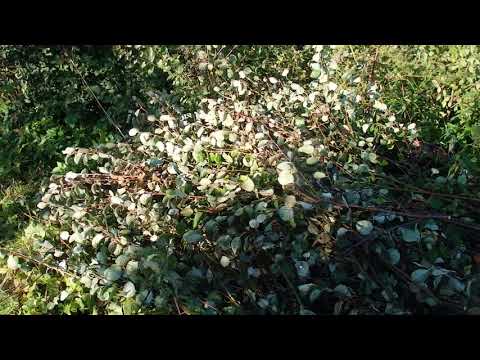

Watch this video on YouTube
Reproduction of irgi
The oval-leaved irga is quite popular among gardeners; it can be propagated by seeds and vegetative methods. Large-fruited varietal irga can be propagated only by vegetative methods, namely: grafting, offspring and green cuttings. It should be remembered that all varietal plants are propagated only by vegetative methods, and species are propagated both by seeds and vegetatively.
Reproduction of irgi seeds
Take well-ripened fruits and remove the seeds from them. They are sown immediately after collection directly into open soil. To do this, you need to prepare the beds, fertilizing them well, you need to bury the seeds in the ground only 20 mm. Crops need abundant watering, then they are covered with a layer of mulch (dried foliage or straw). During the winter, the seeds will be able to undergo natural stratification, and the seedlings will appear in the spring. If the seedlings appear in the autumn, then there is nothing to worry about. In springtime, seedlings should be planted so that they are not crowded. During the summer period, they will need to be looked after, provide them with timely watering, weeding and fertilizing with nitrogen-containing fertilizers. At the end of the first year, the seedling height will be only 10-12 centimeters, and the second - from 0.4 to 0.5 meters. Transplanting seedlings to a permanent place can be carried out only in the third year, when they get stronger.
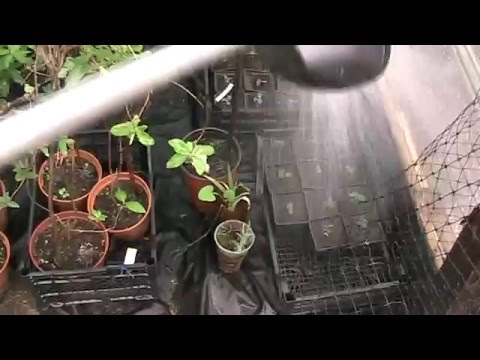

Watch this video on YouTube
Reproduction of irgi by grafting cuttings
In the autumn, stocking of rootstocks should be done; for this, two-year-old rowan seedlings are perfect, they can be found in the planting or in the park. After the rain has passed, such a seedling can be very easily pulled out of the ground. If you wish, you can grow the rootstocks with your own hands. To do this, in the autumn, rowan is sown in open soil, seedlings will appear in spring, and in the second year they can be used as rootstocks. Vaccination should be done in spring, when sap flow is observed. You need to inoculate at a height of 10-15 centimeters from the root collar. Features of the vaccination:
- The hardened scion should be removed from the ground, its root system must be well rinsed. It is necessary to cut the rootstock horizontally at a height of 10 to 15 centimeters from the root collar.
- Take a sharp knife and split the cut in the middle to a depth of 30 mm.
- On the scion it is necessary to make an upper oblique cut. Having departed 15 centimeters from the upper cut, the lower cut should be made in the form of a two-sided flat wedge, its length should be about 40 mm. It should be borne in mind that one side of the wedge should be located slightly below the kidney, and the other - on the opposite side from it.
- A rootstock wedge must be placed in the scion split, while it must be installed tightly. Note that the top of the wedge should not be placed in the cleft.
- The vaccination site must be wrapped with tape. The upper cut of the scion is coated with garden varnish.
- The rootstock is planted in a box, which is filled with peat mixed with sand, while it must be buried to the grafting site. Then the container is removed to a greenhouse or a cold greenhouse. It should be remembered that in a warmer room, the graft will take root somewhat faster.
- Over time, callus should appear on the part of the wedge that was not in the cleft, when this happens, the film needs to be removed, and the finished seedling should be transplanted into open soil.
- All shoots that will grow below the grafting site must be removed.
Reproduction of irgi green cuttings
Cuttings are harvested from the beginning to the middle of the summer period. Choose a sufficiently developed 5 or 6 year old bush and cut the cuttings from the tops of the branches. Cuttings should be 10 to 15 centimeters long. All the lower leaf plates must be cut off from them, while one or two pairs of upper leaves should remain. The lower sections of prepared cuttings should be kept for 6 to 12 hours in a preparation that stimulates root growth. They should be washed in clean water and placed in a cold greenhouse at an angle, keeping a distance of 30–40 mm between them. The soil in the greenhouse must be clean, its surface must be covered with a layer of sand, its thickness can vary from 7 to 10 centimeters. It is necessary that the dome of the greenhouse be at a distance of 15–20 centimeters from the tops of the cuttings. The planted cuttings need watering, which is carried out using a small sieve, since the liquid should not flow in a stream. When the cuttings are watered, the greenhouse should be covered. Make sure that the greenhouse is no hotter than 25 degrees. In this regard, it will be necessary to carry out systematic ventilation, for this it will be necessary to temporarily remove the greenhouse dome. Keep the soil slightly damp at all times. After 15–20 days, the cuttings will have to give roots, after which they must begin to harden. To do this, first, the greenhouse dome is removed for a day. And when the cuttings are a little acclimatized, the greenhouse dome is removed for the night. When the cuttings are 21 days old, they should already have formed a powerful fibrous root system. For growing, they need to be planted on a training bed. After the cuttings take root, they will need top dressing, for this they use mineral fertilizers (for 10 liters of water 30 grams of ammonium nitrate) or slurry, which is diluted with water 6-8 times. Caring for cuttings is similar to caring for mature shrubs.When the next autumn period comes, the grown cuttings can be planted in a permanent place.
Reproduction of irgi by layering
To begin with, you should choose two-year branches with powerful growths or developed annual stems. Experts advise to dig in the layers in the spring, immediately after the soil warms up well. The top layer of soil must be dug up, fertilized and leveled. After that, grooves are made in the soil into which the shoots you have selected fit, while taking into account that they should grow as close to the soil surface as possible. After the shoots are fixed in the grooves, it is necessary to pinch their tops. After the height of the young shoots that have grown from the buds reaches from 10 to 12 centimeters, they will need to be covered up to half with nutrient soil or humus. After 15–20 days, the height of the shoots will already reach 20–27 centimeters, and they will need to be filled up to half with soil again. Separation of rooted cuttings and transplanting them to a new permanent place can be done in autumn or next spring.
Reproduction of irgi by dividing the bush
It is advisable to propagate irgu by dividing the bush only if you are transplanting an adult bush. This procedure is recommended to be carried out at the beginning of the spring period before the buds swell, as well as in autumn 4 weeks before the first frost. From the dug out shrub, you need to cut off the old branches, and also remove the soil from the roots. Then the rhizome is cut into several pieces. It should be borne in mind that the delenka should have at least two healthy strong shoots, as well as a developed root system. It is recommended to cut out old roots, and trim the remaining ones. Then the delenki are planted in new places.
Irgi pests and diseases
Irga has a fairly high resistance to diseases and pests. In rare cases, it can get sick with gray rot (septoria), drying out of branches (tuberculariosis), as well as phyllostic blight of leaves.
If the plant is infected with tuberculariosis, then first of all, the leaf plates begin to turn brown and dry, after which the branches wither, and red bumps appear on their surface. Infected stems should be cut and destroyed. The bush itself in spring is treated with Bordeaux mixture or copper sulfate.
In the event that the irga is affected by phyllostictic spotting, then brownish-brown specks can be seen on the surface of the dried and dead foliage. Infected foliage should be torn off and burned. Before and after flowering, the shrub must be sprayed with Bordeaux mixture.
When infected with gray rot, specks of brown color appear on the surface of the leaf plates, they gradually increase in size. The leaf plates themselves turn yellow, a gray fluffy mold appears on their surface. Then the leaves die off. Gray rot affects only those bushes that have an excess amount of moisture in the roots. In this regard, urgently revise the irrigation schedule or transplant the bush to an area where the groundwater is deeper. For preventive as well as medicinal purposes, the bush should be sprayed with Bordeaux mixture, Oxyhom, Topaz or Cuproxat.
Most of all, such a plant can suffer from the mottled moth and mottled moth. The seed-eater settles in the berries and eats up the seeds; its pupation occurs in the fruits. Caterpillars of the ring moth mine leaf plates, which is why they begin to dry out and crumble. To get rid of such harmful insects, it is necessary to spray the plant with Karbofos, Aktellik or Fufanon.
Types of irgi with photo
It was already mentioned above that a little more than 10 types of irgi are cultivated by gardeners. Some types will be described below.
Irga spicate (Amelanchier spicata)
This deciduous tree or shrub reaches a height of about 5 meters.It has many stems that form a lush oval crown. The color of young branches is brown-red, and of adults it is dark gray. Egg-shaped leaf plates reach 50 mm in length and about 25 mm in width. During opening, they are white-felt, in the summer they have a dark green color, and in the autumn they are painted in various shades of orange-red. Short erect, woolly inflorescences consist of fragrant flowers of white or pink color. Round sweet fruits reach 10 mm in diameter, they are black-purple, and there is a bluish bloom on the surface. Such irga is resistant to frost, drought, gas and smoke. The growing season lasts from April to early October. The homeland of this species is North America.
Irga alnifolia (Amelanchier alnifolia)
The homeland of this species is also North America, or rather, its central and western regions. Such irga prefers to grow in forests, on the slopes of hills and along the banks of rivers and streams. This type is shade-loving. On the surface of young stems, leaves and buds, collected in racemose inflorescences, there is pubescence. The flower petals have a vertical direction, because of this, their middle cannot be seen. The shape of the black fruits is spherical, slightly elongated. Cultivated since 1918
Irga canadian (Amelanchier canadensis)
Such irga prefers to grow along the banks of rivers and water bodies, as well as along the slopes of rocks. The shrub reaches a height of 6 meters, and the tree grows from 8 to 10 meters. Thin shoots are slightly drooping. Ovate leaf plates reach 10 centimeters in length. At first, they are greenish-brown, like felt, in the summer they are greenish-gray, and in the autumn months they are painted in golden-purple tones of varying intensity. The drooping racemose inflorescences contain from 5 to 12 white flowers, they effectively contrast with the light red stems. The sweet round fruits of dark purple color are covered with a bluish bloom. This type is winter-hardy, does not impose special requirements on the soil and moisture level, and is also very decorative. Cultivated since 1623
Irga Lamarckii (Amelanchier lamarckii)
Throughout the season, this plant looks very impressive. In this regard, it is often used for landscaping in group plantings or as a solo plant. Irgu Lamarca and Irga canadensis are very often used as rootstocks for apple and pear trees, since they increase the frost resistance of the scion, as well as its ability to grow in excessively moist soil, which is not typical for stone fruit trees.
Irga oval, or ordinary (Amelanchier ovalis)
The homeland of this kind is Southern and Central Europe. It prefers to grow in fairly dry places, for example, in a forest, in a forest, on the slopes of rocks. The height of this shrub is about 250 centimeters. Young shoots have pubescence, which is why they have a silvery color. Over time, the stems become bare and glossy, and turn brownish red. Dense ovoid leaf plates serrate along the edge, reaching about 40 mm in length. After the foliage opens, it looks like felt. In summer it turns dark green, and in autumn it turns purple-red. Apical racemose inflorescences consist of white flowers, which reach 30 mm in diameter. Blue-black fruits on the surface have a bloom of bluish color. This species is drought tolerant and prefers to grow on calcareous soil. For the winter, this species does not require shelter only in the southern regions. It has been cultivated since the 16th century.
In addition to the above varieties, gardeners grow irga low, smooth, round-leaved, profusely flowering, pleasant, Asian, Bartram, Kuzik, obovate, blood-red, Yut and Jack's irgu.
Irgi properties: benefits and harms
Useful properties of irgi
The composition of irgi fruits includes pectins, mono- and disaccharides, vitamins C, P, A, vitamins of group B, trace elements lead, copper, cobalt, tannins, flavonols, fiber, malic acid and other substances that are necessary and useful to the human body. Such a fruit contains a lot of carotene and ascorbic acid, these substances are powerful antioxidants, thanks to them the body's resistance to infectious diseases and stress increases, the development of Alzheimer's disease slows down, and they also prevent the development of oncology. In addition, the carotene contained in irga helps to improve vision, cure night blindness and prevent the development of cataracts. The pectins contained in the fruit improve the functioning of the heart, reduce the amount of cholesterol in the blood, and promote the elimination of heavy metal salts, radionuclides and other toxins from the body. Juice squeezed from irgi is used in the treatment of enterocolitis and colitis, because it has an anti-inflammatory and strengthening effect. Eating such fruits is recommended for those who suffer from increased nervous excitability or insomnia, because they have a calming effect. Irga is indicated for diabetes mellitus, for example, a decoction is prepared from its bark, with which the mouth is rinsed, and the gruel prepared from the foliage is used as compresses for ulcers.
Contraindications
Irga should not be eaten by hypotonic patients, as well as people with individual intolerance. Since these fruits have a fairly strong sedative effect, they should be eaten with caution by those who drive a car. There are no other contraindications.


Watch this video on YouTube

